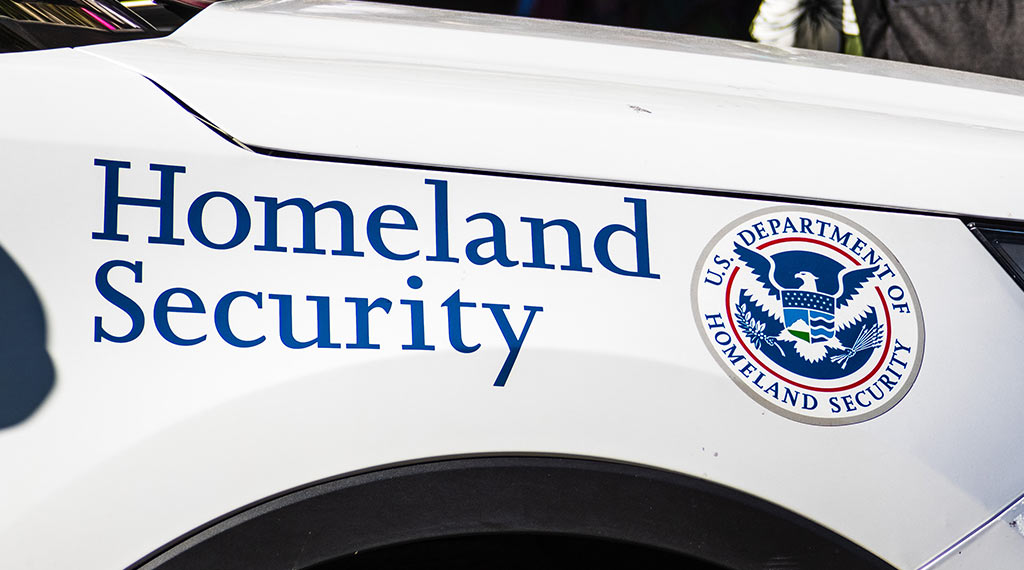DHS: American thought police

The transition from tracking terrorism to chasing thought crime has a major advantage. It exonerates U.S. counterterrorism officials from the meddlesome job of catching actual terrorists.
The Department of Homeland Security, which under the Biden Administration routinely lets watch-listed terrorists cross the southern border unmolested, and which approved entry to the United States for Colleyville Synagogue hostage-taker Malik Faisal Akram despite his being known to British authorities as a terror risk, has taken upon its broad bureaucratic shoulders an even more challenging job.
Stopping the flow of MDM.
MDM isn’t the latest flavor of fentanyl, produced by the Communist Chinese regime for sale to Mexican drug cartels, and now the leading cause of death for Americans between the ages of 18 to 45. No, MDM stands for mis- dis- and mal-information, the latest government acronym from which you must be protected.
MDM is a term developed by the DHS Cybersecurity Infrastructure Security Agency (CISA) to replace the old-fashioned phrase “foreign influence.” Now let us caveat that the U.S. government does indeed have a responsibility to monitor and to identify foreign influence operations. This was the remit of the Reagan-era Active Measures Working Group, which worked tirelessly to identify Soviet lies being spread to undermine the United States’ global standing in the world, and then countered them with the truth.
But under the latest iteration, DHS is no longer concerned solely with enemy lies spread abroad, but increasingly with information spread by “domestic threat actors” (read: American citizens). And no longer are they merely concerned with disinformation, false material spread to manipulate an opponent, but with misinformation, which DHS considers information that is false but not intended to cause harm, and “mal-information,” which means information which is true but the government considers harmful anyway.
This raises the question of who put a government intelligence and law enforcement agency in the position of declaring not only what is true or false but also determining whether information is good or harmful for consumption by free citizens. Of course, no law prohibits American citizens of spreading information of any kind, whether true or false.
Ironically, the DHS MDM effort itself is a result of disinformation, created in the tumult of the Russian collusion hoax, in response to lunatic assertions that the Russian government had somehow thrown the 2016 election to Donald Trump through the use of a handful of Facebook ads.
The Department of Homeland Security certainly has no remit to determine what information its bureaucrats regard as “harmful” for American ears to hear.
And why are government efforts to counter information appearing in what is supposed to be a bulletin aimed at countering terrorism?
U.S. intelligence increasingly has asserted that the cause of terrorism isn’t groups or individuals seeking to achieve identifiable political ends through criminal violence and intimidation (which is, by the way, the legal definition of terrorism). Rather, U.S. counterterrorism gurus insist that terrorism springs fully formed from mis-, dis-, or mal-information adrift in cyberspace, like Athena from the forehead of Zeus.
They did not arrive at this conclusion all at once, but rather over a period of two decades during the Global War on Terrorism, which over the years became defined as domestic not global, a social problem not a war, and ultimately not about terrorism at all.
The transition from terrorism to chasing thought crime has a major advantage. It exonerates U.S. counterterrorism officials from the meddlesome job of catching actual terrorists. For years the U.S. government’s security apparatus insisted that with a little bit more money, and ever more constant surveillance, they could nip the terrorism problem in the bud. But more surveillance brought only more stories of terrorists that the government knew about in advance, yet still failed to stop, which was embarrassing to say the least.
If literally anyone sufficiently marinated in ideas the government doesn’t like might turn out to be a terrorist, how can federal law enforcement be held responsible for dropping the ball on any specific plot? Isn’t policing the ideas themselves a better use of the government’s time and money?
Covering thought policing under the rubric of counterterrorism has another advantage too. It changes the discussion from whether a given idea is true or false, to whether it is safe or dangerous. Have concerns about election integrity, COVID-19 mandates, or school boards? You better shut up; such ideas are inspiring to terrorists.
And of course, the DHS bulletin provides absolutely no evidence or citation to affirm its claims regarding what motivates these “extremists.” One is left only with vague assertion, backed by claims of secret “intelligence,” which ought not be satisfying to any serious interlocutor.
But it is certainly curious that, according to Homeland Security, terrorists always seem to be most interested in topics on which Joe Biden is polling poorly, and on which his administration faces growing criticism from the broader American electorate.
- How to Prosecute the Tesla Bombers - March 31, 2025
- Tesla attacks and domestic terrorism: Kyle Shideler - March 24, 2025
- Modern Minutemen: Vital Considerations to Secure America’s States in the 21st Century - March 17, 2025
